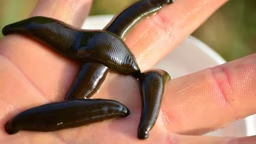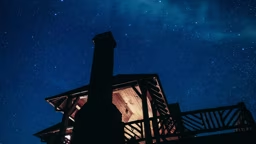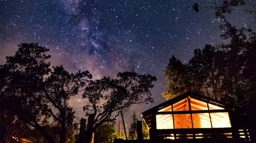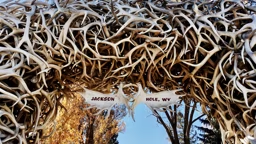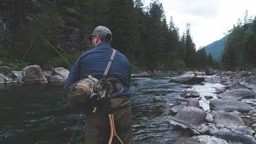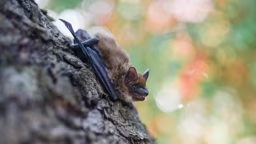The scene plays out often – though not often enough – in the spring seasons of life. Cycles of drama, color, dance and song swirl up in avian clouds from river grasses, gathering energy, power and direction. Light reflects back in iridescent blue, green and violet hues.
In the sky there is coordinated midair ducking, darting and a whooshing of wings while below, another flock runs on water. The babbling, chortling, wheezing and quacking reveals astonishing diversity, and my eyes find all the shapes and colors bedazzling in the rising sun.
While the idea of an ugly duckling transforming into a beautiful swan is a wonderful and meaningful metaphor for a child, it isn’t really something I subscribe to. As far as I’m concerned, ducks are some of the most beautiful creatures of the wild.
Born To Be Wild
Perhaps because they have been domesticated longer than just about any other animal, we have grown complacent in our appreciation of ducks. To many, a duck is a pond-loving white bird with an orange beak and low muscle tone, the very picture of boredom.
But in their wild forms, ducks paint a picture of survival as they investigate all levels of watery environments for food and opportunity. Some dive in pursuit of fish or mussels, some dive for roots and tubers, and others “tip up” or skim the surface for invertebrate food and plant material as they work shallow, muddy backwaters.
And the various species of ducks are uniquely adapted for their environments, complete with unusual bills for their individual needs, including the “sawbill” of the merganser and the exaggerated spatula of the Northern Shoveler. Strong, streamlined and quick, wild ducks are expert fliers. Anything but ordinary, these are colorful, fast, agile, occasionally secretive and wondrously complex birds.
In the sky there is coordinated midair ducking, darting and a whooshing of wings while below, another flock runs on water. The babbling, chortling, wheezing and quacking reveals astonishing diversity, and my eyes find all the shapes and colors bedazzling in the rising sun.
While the idea of an ugly duckling transforming into a beautiful swan is a wonderful and meaningful metaphor for a child, it isn’t really something I subscribe to. As far as I’m concerned, ducks are some of the most beautiful creatures of the wild.
Born To Be Wild
Perhaps because they have been domesticated longer than just about any other animal, we have grown complacent in our appreciation of ducks. To many, a duck is a pond-loving white bird with an orange beak and low muscle tone, the very picture of boredom.
But in their wild forms, ducks paint a picture of survival as they investigate all levels of watery environments for food and opportunity. Some dive in pursuit of fish or mussels, some dive for roots and tubers, and others “tip up” or skim the surface for invertebrate food and plant material as they work shallow, muddy backwaters.
And the various species of ducks are uniquely adapted for their environments, complete with unusual bills for their individual needs, including the “sawbill” of the merganser and the exaggerated spatula of the Northern Shoveler. Strong, streamlined and quick, wild ducks are expert fliers. Anything but ordinary, these are colorful, fast, agile, occasionally secretive and wondrously complex birds.
The Next Generation
Nesting is serious business, so ducks go a few extra steps in preparing for the next generation. To avoid egg predators such as skunks, weasels, foxes and raccoons, ducks rely on a number of age-old strategies.
Ducks are precocial birds, meaning that they are capable of walking and running and leaving the nest just hours after hatching. A duck can only lay one egg per day, so to prevent the ducklings from hatching at different times, females wait to incubate their eggs until all are laid. For days leading up to a lengthy incubation, the eggs are left untended, covered in down. Such a strategy leads to near perfect timing, and these fuzzy neophytes will soon enter swimming and scrambling through a world of hungry dangers.
The mother hen is quick to communicate with her young as soon as possible after hatching to imprint herself firmly into their minds. Recognizing her as their mother and following her with urgency will keep many of the young alive through a complex maze
of perils.
Some species nest high in tree cavities, often far from water or amid flooded timbers. The soft bodies of baby wood ducks, hooded mergansers, goldeneyes and other tree cavity nesters must be flexible and resilient to the bounce and tumble they take when they first leap from the nest within a day of hatching. As the ducklings shake off the fall, mother duck assembles her naïve squadron and leads them safely to water and thick cover.
A few species of ducks actually nest within cattail marshes and bulrushes. Ruddy ducks are cattail marsh birds, and they often must hold their own against coots and grebes – other waterbirds with a flair for the same habitat. The “king” canvasback builds a floating nest among bulrushes and reeds in wild prairie lakes. Ring-necked ducks, redheads and a few others stake a claim to the marshier habitats that so many of us picture as quintessential duck habitat.
Many ducks nest within wet sedge meadows and prairie grasses, well within the reach of predators but reliant upon camouflage and the ability to sit tight when danger is close. Teals, mallards and other dabbling and skimming duck hens often nest in such concealing grasses, building upon excellent nest camouflage with their own cryptic patterns. Ground-nesting ducks line their nests with luxurious down; plucked from their own bodies, and cover the eggs snugly when leaving the nest to feed, stretch or preen.
Nesting is serious business, so ducks go a few extra steps in preparing for the next generation. To avoid egg predators such as skunks, weasels, foxes and raccoons, ducks rely on a number of age-old strategies.
Ducks are precocial birds, meaning that they are capable of walking and running and leaving the nest just hours after hatching. A duck can only lay one egg per day, so to prevent the ducklings from hatching at different times, females wait to incubate their eggs until all are laid. For days leading up to a lengthy incubation, the eggs are left untended, covered in down. Such a strategy leads to near perfect timing, and these fuzzy neophytes will soon enter swimming and scrambling through a world of hungry dangers.
The mother hen is quick to communicate with her young as soon as possible after hatching to imprint herself firmly into their minds. Recognizing her as their mother and following her with urgency will keep many of the young alive through a complex maze
of perils.
Some species nest high in tree cavities, often far from water or amid flooded timbers. The soft bodies of baby wood ducks, hooded mergansers, goldeneyes and other tree cavity nesters must be flexible and resilient to the bounce and tumble they take when they first leap from the nest within a day of hatching. As the ducklings shake off the fall, mother duck assembles her naïve squadron and leads them safely to water and thick cover.
A few species of ducks actually nest within cattail marshes and bulrushes. Ruddy ducks are cattail marsh birds, and they often must hold their own against coots and grebes – other waterbirds with a flair for the same habitat. The “king” canvasback builds a floating nest among bulrushes and reeds in wild prairie lakes. Ring-necked ducks, redheads and a few others stake a claim to the marshier habitats that so many of us picture as quintessential duck habitat.
Many ducks nest within wet sedge meadows and prairie grasses, well within the reach of predators but reliant upon camouflage and the ability to sit tight when danger is close. Teals, mallards and other dabbling and skimming duck hens often nest in such concealing grasses, building upon excellent nest camouflage with their own cryptic patterns. Ground-nesting ducks line their nests with luxurious down; plucked from their own bodies, and cover the eggs snugly when leaving the nest to feed, stretch or preen.
Just Ducky!
Waterfowl are superbly adapted to a life around water, even in the chill of winter. Webbed feet and straining, sieve-like bills are only the beginning. Ducks also have widespread, subcutaneous fat reserves that insulate, add buoyancy and provide rich reserves of energy. Blood circulation in the legs is highly efficient with counter-current heat exchange that warms chilly blood as it heads back to the body, saving valuable body heat and allowing ducks to remain active in freezing conditions.
Ducks are able to stay dry and warm, even when diving underwater, because their feathers are nearly waterproof. Waterproofing questions still exist among ornithologists, but the majority of a duck’s waterproofing seems to be found in the physical structure of the feathers. Ducks have complex and stiff networks of interlocking barbules within the protein barbs of their feathers, creating textured, water-resistant body armor.
To properly care for this armor, and to keep it free of mud and debris, ducks have unusually large oil glands at the base of their tails. To what extent this oil is important in the actual waterproofing is debatable. But watch a loafing duck long enough, and you will see it run its bill down along its back to that gland at the base of the tail, at which time it begins rubbing its beak along, painting the feathers of its wings and body with oil. Very often, this preening and feather maintenance is accompanied with a vigorous, splashing bath.
When it comes to feeding, ducks combine waterproofing, streamlined form, webbed feet, eye protection, bill adaptations, and even fancy, specialized tongues to sort food from filth. Most ducks have blocky, fleshy tongues that press food against ribbed structures in their bills. In some duck species, tongues are elaborate structures, complete with straining sieve bristles that run the length of the tongue, allowing a duck to sort between aquatic invertebrate prey and runny muck. Each tasty mouthful from the duckweed or from the bottom of a pond is sampled, sorted and sifted, so that food can be swallowed and debris ejected.
Waterfowl are superbly adapted to a life around water, even in the chill of winter. Webbed feet and straining, sieve-like bills are only the beginning. Ducks also have widespread, subcutaneous fat reserves that insulate, add buoyancy and provide rich reserves of energy. Blood circulation in the legs is highly efficient with counter-current heat exchange that warms chilly blood as it heads back to the body, saving valuable body heat and allowing ducks to remain active in freezing conditions.
Ducks are able to stay dry and warm, even when diving underwater, because their feathers are nearly waterproof. Waterproofing questions still exist among ornithologists, but the majority of a duck’s waterproofing seems to be found in the physical structure of the feathers. Ducks have complex and stiff networks of interlocking barbules within the protein barbs of their feathers, creating textured, water-resistant body armor.
To properly care for this armor, and to keep it free of mud and debris, ducks have unusually large oil glands at the base of their tails. To what extent this oil is important in the actual waterproofing is debatable. But watch a loafing duck long enough, and you will see it run its bill down along its back to that gland at the base of the tail, at which time it begins rubbing its beak along, painting the feathers of its wings and body with oil. Very often, this preening and feather maintenance is accompanied with a vigorous, splashing bath.
When it comes to feeding, ducks combine waterproofing, streamlined form, webbed feet, eye protection, bill adaptations, and even fancy, specialized tongues to sort food from filth. Most ducks have blocky, fleshy tongues that press food against ribbed structures in their bills. In some duck species, tongues are elaborate structures, complete with straining sieve bristles that run the length of the tongue, allowing a duck to sort between aquatic invertebrate prey and runny muck. Each tasty mouthful from the duckweed or from the bottom of a pond is sampled, sorted and sifted, so that food can be swallowed and debris ejected.
Ducks Forever More!
Wetland habitats suffered heavy losses in the late 1800s and throughout a large part of the 1900s, as draining efforts converted soggy places to fertile farms. In vast areas, 90 percent of wetlands were destroyed and converted to human use. The bustling nesting grounds of the prairie marshes became apparitions of their former greatness. Habitat was in short supply.
In 1935, political cartoonist and head of the U.S. Biological Survey, Jay Norwood “Ding” Darling inspired American efforts to rescue wetlands and wildlife. He initiated a long-lasting idea and designed the first-ever Federal Duck Stamp. Since that year, duck stamp sales have provided enough revenue to preserve over four million acres of wild wetland, grassland and flooded forest habitats. Efforts to save ducks have seen tremendous success, and those efforts have had a profound, positive impact on many other species that join ducks in complex, high quality ecosystems. The immense importance and value of our wetlands and prairies has been one of our greatest conservation revelations.
Even the mosquitoes of marshes contribute to the energy and joy that resounds from excellent duck habitats. As the young birds learn to forage, these aquatic insect larvae help supply their growing bodies with important nutrients. Perhaps, in the more captivating moments, alive in a flurry of wings and dazzling colors, we are able to forgive the dreaded mosquito and thank it for allowing us to witness such spectacular, dapper birds as they take wing.
Brian M. Collins has been enjoying waterfowl migrations annually since his childhood. Many friendships have been made in the company of binoculars, spotting scopes and rafts of migrating ducks.
Wetland habitats suffered heavy losses in the late 1800s and throughout a large part of the 1900s, as draining efforts converted soggy places to fertile farms. In vast areas, 90 percent of wetlands were destroyed and converted to human use. The bustling nesting grounds of the prairie marshes became apparitions of their former greatness. Habitat was in short supply.
In 1935, political cartoonist and head of the U.S. Biological Survey, Jay Norwood “Ding” Darling inspired American efforts to rescue wetlands and wildlife. He initiated a long-lasting idea and designed the first-ever Federal Duck Stamp. Since that year, duck stamp sales have provided enough revenue to preserve over four million acres of wild wetland, grassland and flooded forest habitats. Efforts to save ducks have seen tremendous success, and those efforts have had a profound, positive impact on many other species that join ducks in complex, high quality ecosystems. The immense importance and value of our wetlands and prairies has been one of our greatest conservation revelations.
Even the mosquitoes of marshes contribute to the energy and joy that resounds from excellent duck habitats. As the young birds learn to forage, these aquatic insect larvae help supply their growing bodies with important nutrients. Perhaps, in the more captivating moments, alive in a flurry of wings and dazzling colors, we are able to forgive the dreaded mosquito and thank it for allowing us to witness such spectacular, dapper birds as they take wing.
Brian M. Collins has been enjoying waterfowl migrations annually since his childhood. Many friendships have been made in the company of binoculars, spotting scopes and rafts of migrating ducks.
Finding Mates
Ducks court one another as early as autumn, and usually over winter or during the spring migration and then firmly establish pair bonds. Even if separated from each other for a month or two, experienced duck pairs reunite during this time. For this reason, waterfowl migrations are a joyous spectacle to observe, filled with fanciful ritual, vivid color and drama.
Mergansers snore out a wooing chuckle. Teal display their faces in graceful feathered movements. Mallards swim low in the water with fine sets of curled plumes above their tails, green heads shining. For every duck, there is a display. It’s all about winning the affections of the hen.
Head-throwing displays orchestrated by male goldeneye ducks personify the nature of waterfowl courtship displays. Throughout winter and amid the rush of spring migration, courtship involves rafts of males swimming in pursuit of females, looking fit and proud. When sunlight sparkles on the violet, green and pristine white feathers of the drake (another term for a male duck), there is little doubt what that flashy display shows the female. As if a masquerade ball, the eyes behind the mask tell a suitor’s tale, and the vivid golden eyes that give this bird its name shine brightly for her affection. The drake, having competed to be in the female’s best view, lifts his head dramatically above a stretched neck, tilts his head forward a bit, and then throws his head all the way back to his tail, bill wide open, emitting a flat, blatting “quack.” In every way possible, he is communicating his fitness, his strength, his ability to provide worthy genes and a durable pile of fuzzy ducklings.
Ducks court one another as early as autumn, and usually over winter or during the spring migration and then firmly establish pair bonds. Even if separated from each other for a month or two, experienced duck pairs reunite during this time. For this reason, waterfowl migrations are a joyous spectacle to observe, filled with fanciful ritual, vivid color and drama.
Mergansers snore out a wooing chuckle. Teal display their faces in graceful feathered movements. Mallards swim low in the water with fine sets of curled plumes above their tails, green heads shining. For every duck, there is a display. It’s all about winning the affections of the hen.
Head-throwing displays orchestrated by male goldeneye ducks personify the nature of waterfowl courtship displays. Throughout winter and amid the rush of spring migration, courtship involves rafts of males swimming in pursuit of females, looking fit and proud. When sunlight sparkles on the violet, green and pristine white feathers of the drake (another term for a male duck), there is little doubt what that flashy display shows the female. As if a masquerade ball, the eyes behind the mask tell a suitor’s tale, and the vivid golden eyes that give this bird its name shine brightly for her affection. The drake, having competed to be in the female’s best view, lifts his head dramatically above a stretched neck, tilts his head forward a bit, and then throws his head all the way back to his tail, bill wide open, emitting a flat, blatting “quack.” In every way possible, he is communicating his fitness, his strength, his ability to provide worthy genes and a durable pile of fuzzy ducklings.
Ruddy ducks are downright daffy in their displays to females, combining bold colors and a splatting “song” with the music of lightly splashing water. With his deep blue bill, his dashing suit of rusty red, and his sharp, black cap contrasting with the clean white of his face, the male ruddy duck lifts his stiff little tail up above the water. Proudly he raises his bill high in the air and then jerks it quickly down to splash in the water, rapidly, repeatedly, with each movement a little shorter and a bit more brisk, until he has run out of room to move in the imaginary confines of his display. Splat—splat—splat-splat splatsplatsplat!
Generally, when engaged in courtship rituals, worthy male ducks of all kinds are unmoved by all forms of danger, remaining stoic and rock-steady until the female decides the danger is too great. When she flies, he follows.
Generally, when engaged in courtship rituals, worthy male ducks of all kinds are unmoved by all forms of danger, remaining stoic and rock-steady until the female decides the danger is too great. When she flies, he follows.

 BRIAN M. COLLINS
BRIAN M. COLLINS 
 BRIAN M. COLLINS
BRIAN M. COLLINS 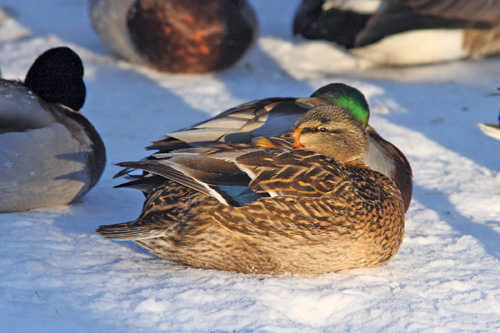 BRIAN M. COLLINS
BRIAN M. COLLINS 





